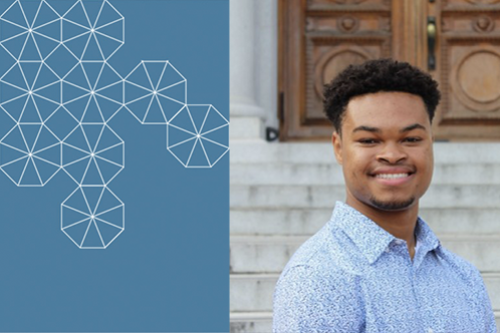TRANSOC Mixer Brings Together Alumni, Students, and Professionals
On April 24, TRANSOC hosted a lively mixer that brought together alumni, transportation students, faculty, and local professionals for an evening of connection and celebration.
On April 24, TRANSOC hosted a lively mixer that brought together alumni, transportation students, faculty, and local professionals for an evening of connection and celebration.
Congratulations to CEE Ph.D. candidate Zhe Fu, who placed second in the UC Berkeley Grad Slam with her project, “Stop-and-go No More: How a Few Smart Cars Can Fix Traffic Jams!”
Dr. Shakhzod Takhirov, Engineering Manager for Technical Labs and Service to Industry at Berkeley CEE, joins the international research team that has uncovered Tugunbulak, a newly discovered 120-hectare medieval city in the mountains of Uzbekistan. Dated to the 8th–11th centuries, Tugunbulak and the nearby settlement of Tashbulak are located at elevations exceeding 2,000 meters, placing them among the highest known urban centers of their time, comparable to Machu Picchu in Peru.
Written by Pooja Nerkar
What happens when a region exceeds federal air pollution limits? One of the first steps is often to turn to a model—specifically, the Community Multiscale Air Quality Modeling System (CMAQ)—to simulate whether a proposed regulation will be enough to bring pollution back below the legal threshold.
CEE Professor Susan Shaheen, a nationally recognized expert in emerging transportation technologies, was recently featured in a USA Today article examining the rise of driverless robotaxis and their growing appeal, particularly among women riders. For many, the absence of a human driver offers a greater sense of safety and comfort. Others are drawn to the technology because they believe computers are safer drivers than people.

B.S., Civil & Environmental Engineering, Class of 2026
Vice President of External Affairs, UC Berkeley Chi Epsilon
Civil Engineering Intern, Kimley-Horn
“It’s more than just counting potholes.”
Compiled by Pooja Nerkar
I’ve always been interested in how cities work and how infrastructure can improve people’s daily lives. Civil and Environmental Engineering at UC Berkeley has given me the opportunity to explore those systems in depth and think about how we can build more efficient, equitable communities.
This semester, I took CYPLAN 114: Introduction to Urban & Regional Transportation with Professor Karen Trapenberg Frick.
Our first project focused on developing transportation improvements between Berkeley and the NASA Ames Research Center. We researched the Berkeley Space Center and regional plans by the Metropolitan Transportation Commission, and presented our recommendations to NASA and Berkeley representatives.
Our second project—my favorite—looked at transportation equity in Oakland. My team proposed a more inclusive approach for OakDOT’s 311 reporting system. We even went into the field to count potholes in a neighborhood, where we ended up in a great conversation with a local resident about street safety. That interaction showed me the real value of community engagement in engineering.
This course sparked a new interest in public outreach alongside transportation planning. I want to help design infrastructure that not only functions well but also reflects the needs and voices of the communities it serves.
Professor Karen Trapenberg Frick. Her course exposed me to the breadth of opportunities in transportation and emphasized the value of equity and real-world engagement in civil engineering.
Congratulations to Berkeley CEE Ph.D. student Xiaolei Chu and incoming postdoc Prateek Arora, who won second and first place, respectively, for their groundbreaking research in resilience engineering at the 2025 EMI Objective Resilience Student Paper-Presentation Competition!
We are thrilled to announce that Carlos Quezada, a graduating senior in Civil Engineering with a Certificate in Design Innovation, has been named a 2025 University Medal Finalist. This prestigious honor recognizes the most outstanding UC Berkeley graduates who exemplify academic excellence, innovation, and commitment to public service.
The Department of Civil & Environmental Engineering is excited to announce a new special topics course for the Fall semester: Materials Science and Characterization of Cement and Concrete (CIV ENG 190/290). Taught by CEE Assistant Professor Franco Zunino, this course offers a fresh perspective on the foundational materials used in civil engineering.
Researchers at the Center for Smart Infrastructure (CSI) testing lab evaluated a jointed pipe system under conditions simulating extreme scenarios, such as landslides or earthquake fault ruptures. The focus of the assessment was a 42-foot-long, 8-inch-diameter ductile iron pipe system designed to resist earthquakes, outfitted with advanced distributed fiber optic sensors for data collection.